- News
- Reviews
- Bikes
- Components
- Bar tape & grips
- Bottom brackets
- Brake & gear cables
- Brake & STI levers
- Brake pads & spares
- Brakes
- Cassettes & freewheels
- Chains
- Chainsets & chainrings
- Derailleurs - front
- Derailleurs - rear
- Forks
- Gear levers & shifters
- Groupsets
- Handlebars & extensions
- Headsets
- Hubs
- Inner tubes
- Pedals
- Quick releases & skewers
- Saddles
- Seatposts
- Stems
- Wheels
- Tyres
- Tubeless valves
- Accessories
- Accessories - misc
- Computer mounts
- Bags
- Bar ends
- Bike bags & cases
- Bottle cages
- Bottles
- Cameras
- Car racks
- Child seats
- Computers
- Glasses
- GPS units
- Helmets
- Lights - front
- Lights - rear
- Lights - sets
- Locks
- Mirrors
- Mudguards
- Racks
- Pumps & CO2 inflators
- Puncture kits
- Reflectives
- Smart watches
- Stands and racks
- Trailers
- Clothing
- Health, fitness and nutrition
- Tools and workshop
- Miscellaneous
- Buyers Guides
- Features
- Forum
- Recommends
- Podcast
news
"Only in Florida...": Rider with "armed cyclist" jersey, close-passing flags and countless bike lights goes viral... again; Jeremy Vine responds to those "focusing rage" on cyclists; A PROPER turbo set-up + more on the live blog
SUMMARY
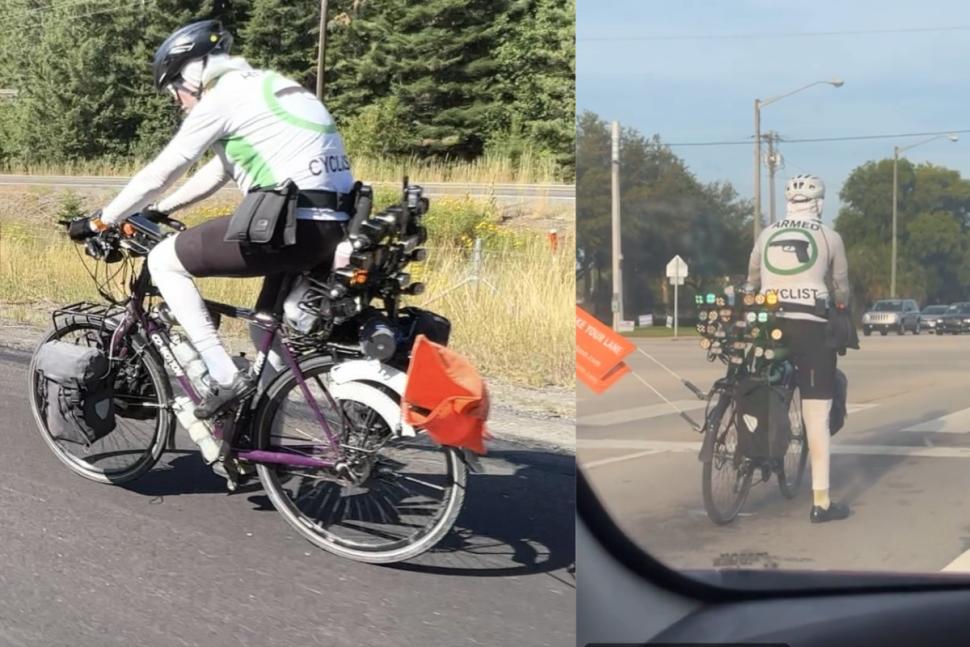 "Armed Cyclist"
"Armed Cyclist"18 October 2024, 10:27
"Only in Florida...": Rider with "armed cyclist" jersey, close-passing flags and countless bike lights goes viral... again
The latest sighting of Florida's "armed cyclist" has gone viral again...
We first covered the "armed cyclist" last year... his real name is James Whelan, by the way... a resident of Florida who has built up something of a cult following on his "Armed Cyclist" Instagram page and YouTube channel where he posts images from his cycling trips across America and, sometimes, run-ins with local law enforcement officers.
Whelan told road.cc that he runs 28 lights on his rear rack and eight on the front handlebars. "I don't get people turning left or right in front of me at all because they pay attention when they see a bright burst of light coming towards them", says Whelan.
"For the tail light I came up with that idea because I got tired of people not seeing me. Now people typically change lanes a half mile behind me when they see my lights.
"In South Florida there is a lot of road rage against cyclists just for being on the road. Most people can read what it says. When they see my jersey it has a huge calming effect on the people that don't like cyclists."
18 October 2024, 15:37
"We have reached the bottom": French cycling community "deeply shaken" by death of cyclist crushed by SUV driver in alleged road rage attack, as mayor says "it is unacceptable to die in Paris while riding a bike"
18 October 2024, 14:21
Homemade safety paddle "doing the job I designed it for"
Just the safety paddle doing the job I designed it for. 99% certain this driver would have close-passed me through the pinch point. pic.twitter.com/44w0uELpkc
— Bicycle-Riding Motorist (@MrHappyCyclist) October 17, 2024
"Just the safety paddle doing the job I designed it for," Dr Grahame Cooper reported. "99 per cent certain this driver would have close-passed me through the pinch point.
Of course, the accepted wisdom says we should move to the centre of the lane to prevent dangerous overtakes, which I do if I don't have the safety paddle. Like this, perhaps? pic.twitter.com/UMRzgPDjtA
— Bicycle-Riding Motorist (@MrHappyCyclist) October 18, 2024
He's penned the full story of the paddle here if you want to find out more...
18 October 2024, 14:04
"I liked it at first, but it's a bit annoying": Wout Van Aert on Wout van Aert
You might have heard about the up-and-coming 15-year-old Belgian cyclist with a very famous namesake...
Naturally, the Belgian press has tracked Wout Van Aert down (note the slight difference with Wout van Aert, who has a smaller 'v' when named in full), Sporza speaking to the 15-year-old aspiring racer about the amusing tale.
"I liked it at first," the young Van Aert says. "But when I sign up for a race, they often remind me that I have the same name as the great Wout van Aert. That's a bit annoying, but not really bad. In the meantime, they know that there is someone else racing with that name.
"And we're not distant relatives either. My family name is written with a capital "V", not with a smaller "v" like professional cyclist Wout van Aert (whose grandparents are Dutch). I don't think Wout van Aert knows that there is another Wout Van Aert racing. It would be fantastic to meet my namesake and idol in real life."
And of course, who does Van Aert prefer? Wout van Aert or Mathieu van der Poel?
"I'm not a fan of Mathieu van der Poel. I'm not against Van der Poel, I'm just for Van Aert."
18 October 2024, 13:10
Labour MP who is Parliamentary Under-Secretary of State for Transport: "Yes, I would feel safe letting my children cycle on London's roads"
Simon Lightwood, the Labour MP for Wakefield and Rothwell who is also Parliamentary Under-Secretary of State for Transport, has championed giving children "confidence" to cycle from a young age, saying it is "so important to instil those behaviours and values to be able to use active travel".
Speaking to the Metro while visiting a community transport provider in north-west London, Lightwood also said he would feel safe letting his children, aged seven and eight, cycle in London.
> Labour government to invest "unprecedented levels of funding" in cycling
"I would be with them obviously and like any parent and be guarded of them, but it's no particular reflection on roads in London or Wakefield," he said. "Obviously, one of the things we invest in is bike-ability, so that people from a young age are given the skills and confidence to then go out and cycle. I think it's a really important stage for young people to instil those behaviours and values to be able to use active travel."
The comments come at the end of a week when research by Swapfiets revealed that 90 per cent of Brits fear cycling in UK cities, with concerns about collisions, road rage and theft putting people off.
18 October 2024, 10:40
Active travel campaigners blast "clumsy, unworkable, and discriminatory" plan to ban cycling in Birmingham city centre, which council says will target food delivery cyclists "speeding around city without care"
18 October 2024, 09:53
Now THAT'S a turbo set-up...
While we're all trying to make turbo training more bearable...
Maybe we should really be aspiring to make it more unbearable... no Zwift, no fan, no music, no Netflix... just watts...
18 October 2024, 09:41
"It is very special": Katie Archibald back at the top of the track cycling world having missed Olympics due to numerous leg injuries from garden fall
Speaking to the BBC TV cameras after last night's rainbow jersey-winning ride, Katie Archibald called the victory "very special", the team pursuit success the culmination of months of rehab from horrific leg injuries sustained in a freak garden fall when she tripped on a step just weeks before the Olympics.
Archibald broke two bones in her lower leg, ripped ligaments, and dislocated her ankle and missed the Paris Games.
"It is a deep breath, it is feeling where you are meant to be and a team you are meant to be part of and what a treat to be part of this squad. It is very special," Archibald said following last night's victory, her fifth world title.
18 October 2024, 09:22
More medals for Great Britain at UCI Track World Championships, as women's team pursuit squad crowned world champs
The British women's team pursuit squad, spearheaded by Katie Archibald's return from a horrendous injury that saw her miss the Olympics, won the event at the 2024 UCI Tissot Track World Championships last night. Archibald, Jess Roberts, Josie Knight and Anna Morris qualified fastest and caught the Chinese team just past the halfway mark to reach the gold medal final, Meg Barker replacing Roberts in the line-up as the Germans were defeated.
The men's team pursuit line-up of Ollie Wood, Ethan Hayter, Charlie Tanfield and Josh Charlton also won a medal, taking silver in the men's event. Defeated in the final by host nation Denmark, Tanfield said the group could be satisfied "we got the most out of ourselves".
World Championships debutants Noah Hobbs and Harry Ledingham-Horn also deserve a shout-out, finishing sixth in the men's scratch and fourth in the men's keirin respectively.
18 October 2024, 07:57
"The more cycle, the fewer drive. The fewer drive, the fewer die...": Jeremy Vine responds to those "focusing rage" on cyclists, makes the case for floating bus stops "making roads safer for everyone"
The floating bus stop conversation has picked up pace in recent times. A quick explainer for anyone not aware of the infrastructure design... it's essentially those bus stops that are built out into the road with a cycle lane passing on the pavement side, pedestrians using a zebra crossing or other crossing across the cycling infrastructure to access the bus stop. I could just show you what we mean, I guess...
In design terms they have been used to allow for protected cycleway routes on busy urban roads punctuated by bus stops, removing cyclists from the potential conflict and danger that a part of the road with bus drivers pulling in and out may cause a vulnerable road user. The bus has to be able to access the roadside to collect/drop off passengers, the cycle lane still needs to be protected to keep users safe, how are these two points factored in?
What's been heard in response is criticism from some, notably some campaigners for blind people, who say the design puts pedestrians in danger...
> "Like playing Russian roulette": Blind people raise concerns about 'floating' cycle lane bus stops
In May, we reported that the former Transport Secretary Mark Harper was considering a ban on floating bus stops, something London's Walking & Cycling Commissioner Will Norman said "could stop new protected cycle lanes" and risked "putting lives at risk across the country".
That came a year after Mayor of London Sadiq Khan had promised to conduct a review of floating bus stops and assured that he's committed to reducing danger on cycling lanes, after 164 campaign groups raised safety concerns for visually impaired pedestrians.
No evidence of any incident was raised in those concerns and, in January, leaked Transport for London documents suggested that floating bus stops might "feel dangerous" but there is a "low risk" of a collision.
Back to the present day, Jeremy Vine, pro-cycling voice and BBC/Channel 5 broadcaster, took to social media to make the case for supporting the infrastructure design, telling his 780,000 Twitter followers... "Floating bus stops protect vulnerable road users — chiefly, cyclists. Making it safer to cycle gets more people riding bicycles. The more cycle, the fewer drive. The fewer drive, the fewer die. So floating bus stops make the roads safer for EVERYONE."
Naturally, the concerns for blind people were raised, to which Vine's stock reply was: "Every year 1,700 killed by drivers. Every year six people killed by cows. Every year three killed by cyclists. Look at where you're focusing your rage, have a think, and then we can talk."
Thoughts?
Dan is the road.cc news editor and joined in 2020 having previously written about nearly every other sport under the sun for the Express, and the weird and wonderful world of non-league football for The Non-League Paper. Dan has been at road.cc for four years and mainly writes news and tech articles as well as the occasional feature. He has hopefully kept you entertained on the live blog too.
Never fast enough to take things on the bike too seriously, when he's not working you'll find him exploring the south of England by two wheels at a leisurely weekend pace, or enjoying his favourite Scottish roads when visiting family. Sometimes he'll even load up the bags and ride up the whole way, he's a bit strange like that.
Latest Comments
- imajez 3 sec ago
- looks like someone has fallen for the steel is real markerting BS. I only care how a bike rides, not what it is made of. I had a lovely steel...
- lonpfrb 1 hour 20 min ago
That argument is ignorance of the widespread height and width restrictions to be found on the many minor roads that were originally created for...
- David9694 3 hours 35 min ago
cyclists should be made to have number plates - Interesting police video here of the range of illegal number plates - we'd got, as the caption says...
- rookybiker 4 hours 48 min ago
The trailer seems to connect to both ends of the rear axle. Can it do tight corners without dragging the tyre sideways?
- froze 4 hours 52 min ago
Motorists have always been unkind to cyclists, but distracted driving is adding to the problem....
- Destroyer666 5 hours 45 min ago
Have you owned Bont shoes? In my experience even the widest Lake shoes have had a bizarre form of narrowing way too much in the toe area. But the...
- froze 6 hours 12 min ago
Not sure if this is possible, but this news letter goes out all over the world, and some places like Decathlon does not send stuff to America, in...
- Hirsute 6 hours 57 min ago
I'm confused as to why you'd need bib shorts indoors.
- Oldfatgit 7 hours 26 min ago
I'm sure you were being sarcastic... however ... Lewis Hamilton lives in Monaco. Yet another car driver that doesn't pay any tax
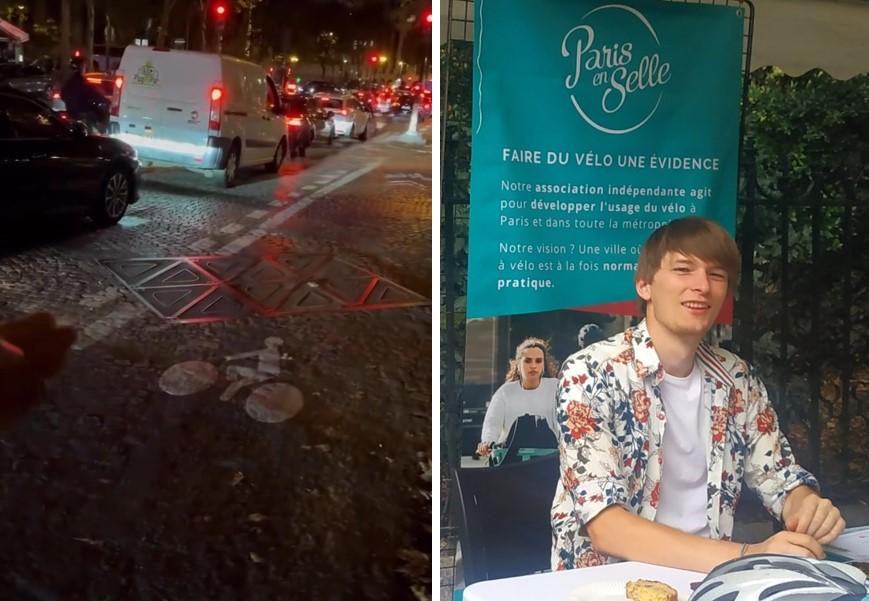

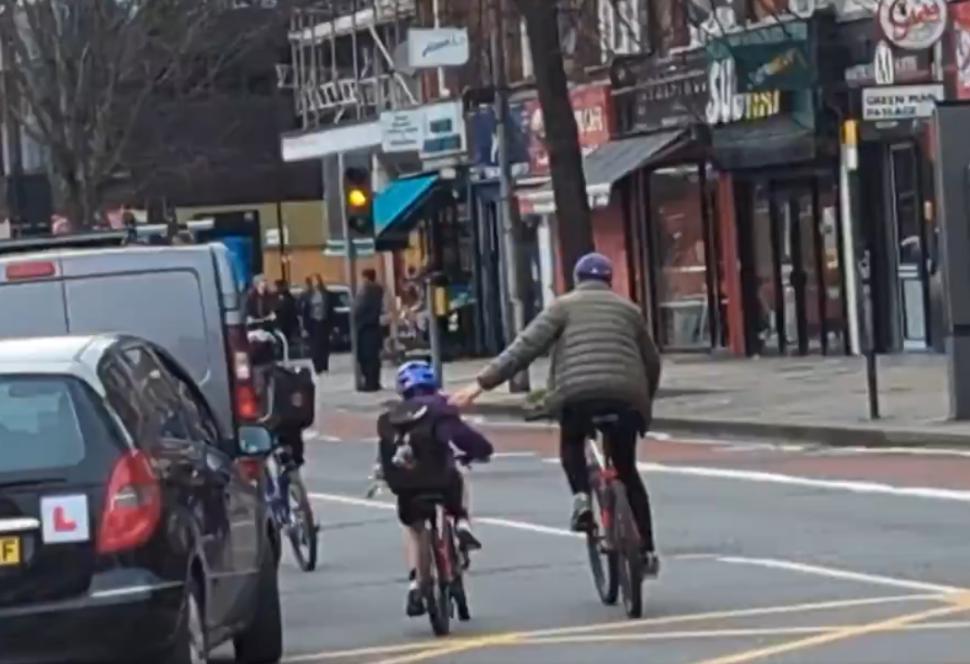
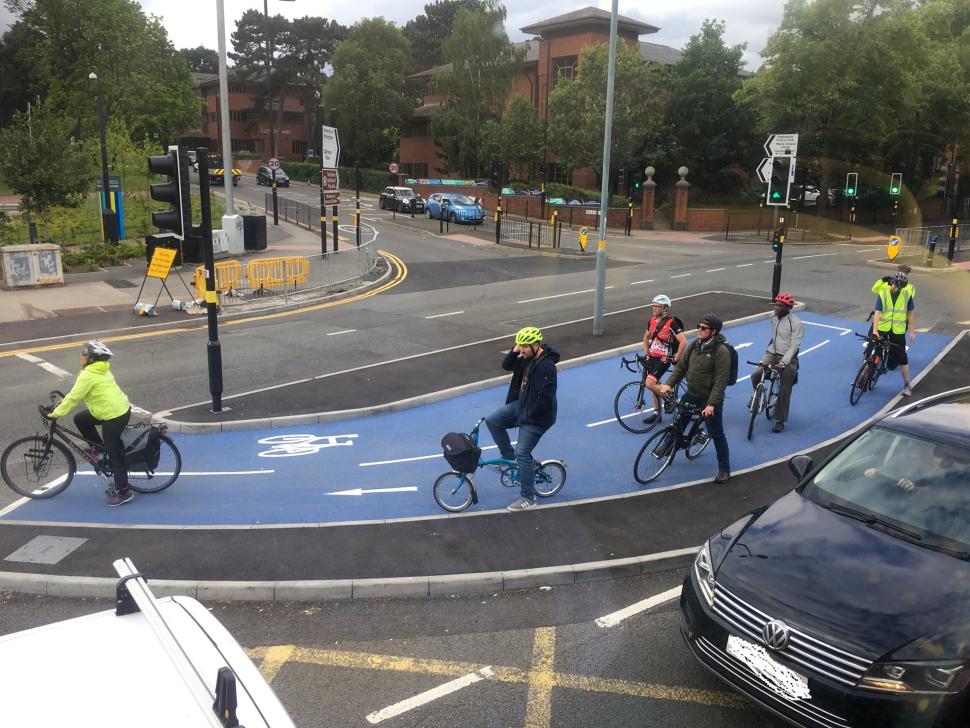

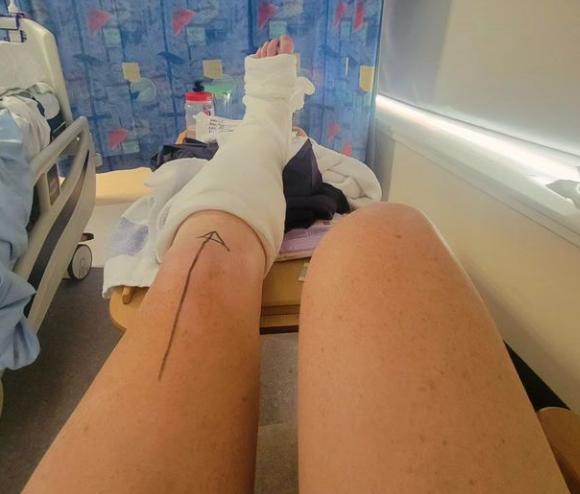




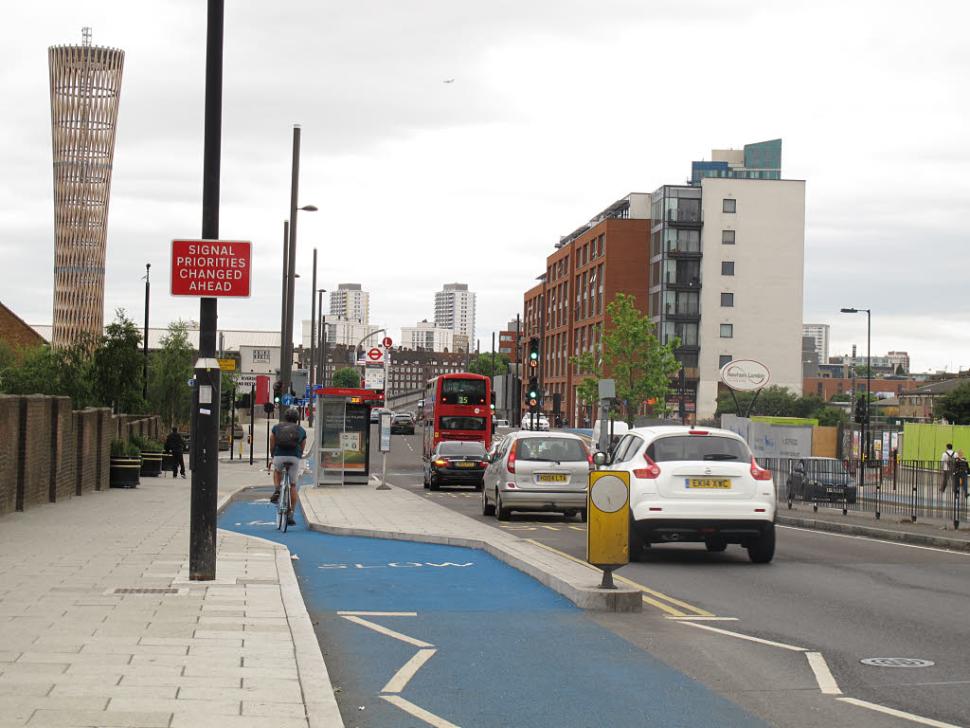
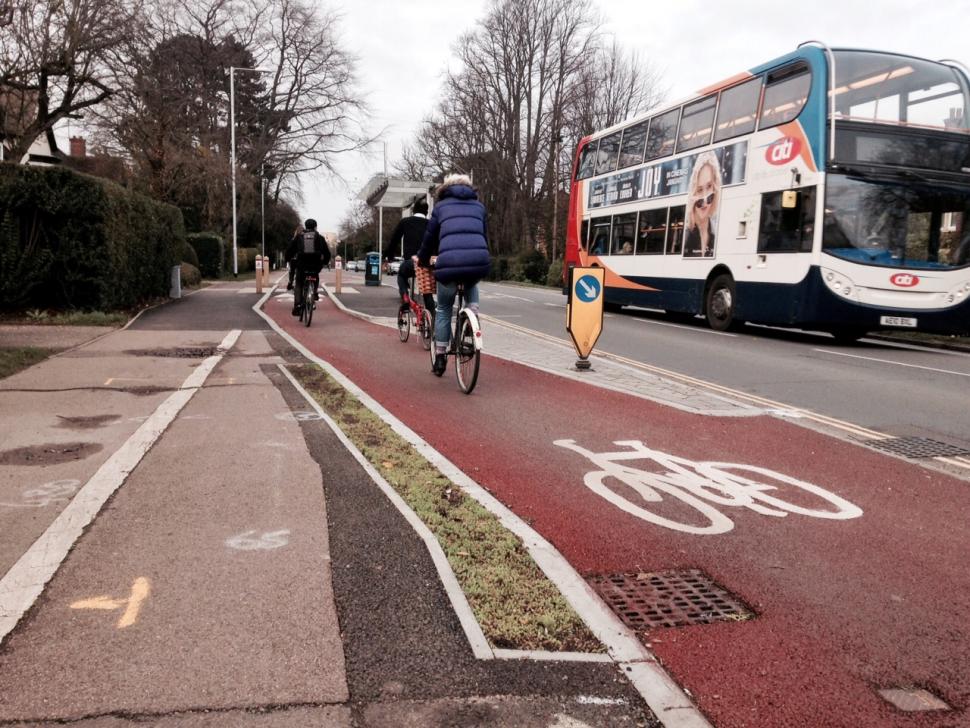

Add new comment
46 comments
Gotta get one of those 'armed cyclist' jackets.
Careful of the Met Police if cycling in London, then...
25 years ago I used regularly to see a motorcycle courier around the Fleet Street area (at a time when I was spending a few months doing the same myself) who had a notice stuck to his top box reading: "Full of pills, armed to the teeth, mad as hell. Please take care when passing." Don't know if it had any effect on drivers, always made me laugh.
I agree with Jeremy Vine..
"We" are used to floating busstops here in theNetherlands..
And yes much more people get killed by cows !
I cannot remember a death by cyclist over here, so go for it britain
Bus stop and flipped - beat that !
Well they still did - the hatched area is still part of the pinch point.
"... I would feel safe letting my children cycle on London's roads"
is very different to
"... I DO feel safe letting my children cycle on London's roads"
One implies he might do so, the other indicates that he actually DOES.
Say No to floating bus stops
Say no to putting cars on the road
Forget rawdogging on flights, 3hrs on a turbo with nothing but a head unit to look at, that's hardcore 🤘
That's a bit sad actually if you did it in the Pennies that would be hardcore
To play
Duncan Smith'sDevil's Advocate for a moment here, I'm not sure Vine's argument really stands up. These arrangements are relatively new and not particularly widespread, so if they were posing a new kind of danger, you wouldn't necessarily expect to see much result of that yet. If he'd pointed to other places where their use is longer-established/more widespread, his point would have been rather stronger.OTOH in one sense they are not new at all and rather widespread, in the UK... Here's Ranty Highwayman demonstrating just that.
Yeah - I don't really think that helps the argument, though.
Firstly, I'm not convinced such arrangements are as common as he suggests - I can only think of a couple anywhere near me, and I don't know that they have any bus stops on them. Maybe things are different in that London, or other parts of the country, but then Vine'd need to be quoting statistics for those areas to make the point - not national ones.
Secondly, while there's a superficial resemblance in some of those 'service road' examples, I don't think they're relevant to the argument. As RH notes, they're not typically carrying through traffic, and certainly not intentionally directing cycle traffic off the main route onto them. Plus foot traffic tends to cross more at the end points, where there tends to be more of an obvious junction point than there would be with a cycle track bypass.
None of which is to say that those moaning that these things are dangerous have a point - just to say that Vine's counter-argument (if you can counter an argument which isn't really an argument) isn't as much of a knock-down as he thinks.
The strongest part of that article that Vine could have used is the latter part, where it says 'well they've been doing lots of exactly this kind of stuff in other countries for ages, and it doesn't seem to have caused a problem there'.
In response to "yeah, but it works every day with no issues in NL" you will probably get the response "but we're not Dutch! That is over there, not in the UK..."
It's tempting to mock that ("you're right, we're not Dutch; it's the ... cheese and windmills - that makes the difference?"). After all it's not much over a hundred miles away, with similar climate, a rather similar culture (even speaking a fairly closely related language and in many cases English also).
OTOH there is something to getting something new into the minds of people - particularly in situations where people may be operating more on autopilot / "muscle memory" e.g. navigating around in public (and driving, frighteningly).
Probably it's like so many things - there are tons of objections, "nobody wants it" etc. ... until it's everywhere and it's been a couple of years; then people are just using it, getting on with their lives and would struggle to remember all the fuss.
They really are common.
Here's a gallery of 50 examples from London, with some going back nearly a century.
https://floating-bus-stops.tumblr.com/
It really is a total storm in a teacup.
For research, we have a substantial base - the same points were being made by the same groups back in 2014 or so, demanding studies, and studies were done.
They did not like the results, so inflammatory videos are still being trolled into the Daily Mail etc. A case based on emotion and scaremongering is being made, because that's pretty much all they have.
Issues are mainly around some people riding hacked e-cycles and e-mopeds rushing too fast, but that is manageable via regulation of such vehicles and employment contracts.
What Vine misses imo is to point out that these are mobility tracks, not cycle tracks, and are used extensively by disabled people using mobility aids, which may well include a standard cycle. So the disabled people vs cyclists narrative is both wrong and disingenuous.
As I said, though - London's London, not the UK. And even then, some of those still aren't really relevant to the 'but it's them terrible cyclists that are dangerous' claim.
I don't disagree (I basically said as much).
Anyway, my minute of advocacy is more than up - I'm off the clock now.
I'm sure I said this before in response to one of the previous articles, but as well as the valid points about cars being far more dangerous for all pedestrians, including the visually impaired ones, and how they work just fine in countries where they have been established for longer, I think we should be pushing for better and more consistent design for ones installed here.
Where conflict exists now it's mainly because people aren't used to them, and having a consistent design would help with that process. I read somewhere that in France (?) the cycle lanes have rumble strips on the approach to a floating bus stop as a reminder to cyclists that they may need to give way soon to pedestrians on the mini zebra crossings. I think incorporating them into standard design here will improve safety and show goodwill.
The deliberate pushing of anti-cycling mentality is relevant too. It's right to push back on that, to remind people that cars are the bigger problems, but we have to be careful not to let it come across as being indifferent to the concerns of people with disabilities.
Have heard about the rumble strips. Ultimately if they're not in NL (where there are thousands of these things in use every day all across the country) they're not needed.
Given where we are in the UK though it may be we can't get direct to the best design (when there is population-level "mass cycling" across the whole country at over a fifth of ALL trips!) but have to work our way there via some intermediate place?
No, it wasn't the NL. Probably parts of France.
It is fair to say that these lanes work fine in the NL where they don't have rumble strips, but what they do have there is a culture of people cycling and mixing with pedestrians and decades of investment in infrastructure that has been given the required space and isn't bodged.
Ideally we'd like non-bodged infrastructure too, but often we end up with whatever could be squeezed into the space available, and at a population level we have less experience of pedestrians and cyclists getting along together. Cyclists in the NL tend to cycle at a more sedate pace on upright bikes than the typical British commuter. The people on the NL learned how to keep themselves and each other safer in these spaces before e-bikes or cyling with headphones became common.
Consistent design, education and councils holding their nerve while people get used to systems are all important, but we shouldn't rule tweaking the design to consider concerns from a population who are less used to cyclists.
They wouldn't need to be everywhere, but rumble strips are easy enough to install and provide a reminder to those who need it to look up and consider whether they need to adjust their speed.
It also shows a willingness to consider the concerns of the visually impaired at a time when the anti-cycling groups are very keen to claim we are the selfish ones.
Probably only if they're easy to uninstall and not too intrusive. As for the average UK cycle commuter don't forget that this infra is for the UK cyclist of tomorrow e.g. exactly like the average Dutch cyclist - going slowly, not going very far, might be a young child, an elderly person, someone with disabilities using their wheelchair or some mobility vehicle etc.
Everyone has a right to express their opinion of course, but 164 campaign groups all interested in safety concerns for visually impaired pedestrians? That sounds rather like 164 people each calling themselves a campaign group…the disproportionate amount of attention paid recently to the vehemently anti-cycling NFBUK (the self-styled "Voice of Britain's Blind People" despite the fact that they only have 4000 Twitter followers (there are 320,000 visually impaired people in the UK) and are strangely reluctant to reveal their membership numbers) demonstrates the dangers of assuming that a vociferous group comprising a few individuals is in any way speaking for the majority of those whom they claim to represent.
I have zero evidence but I wonder if there may have been some motivated "selective concern" amplifying this... (without dismissing the genuine concerns, as per my other posts).
I used to go on bike rides with members of RNIB. Obviously in tandems. Everyone loved it. Always had a pub stop before heading back. I wonder how NFBUK would feel about this?
I suspect your stoker would be subject to disciplinary procedures for fraternising with the enemy…
This is terrible - are you suggesting all blind people have to equip themselves with a tandem and a captain just to feel safe on our streets?!
Their membership numbers are a little over 500.
It is in the Annual Reports on the Charity Commission website.
If you hunt around you can find the type of organisations listed, and they tend to be small groups, local branches of organsations, and all kinds of strange setups.
Cheers - I did ask them directly earlier this year but they didn't respond, for what seem like obvious reasons given that information, 320,000 people registered blind in the UK and "The Voice of Britain's Blind People" only has 500 members...
There seem to be two main issues with these floating bus stops (which are not really anything to do with floating bus stops!):
1. Pedestrians crossing the cycle lane without looking.
2. Cyclist failing to give way to pedestrians using a zebra crossing on the cycle lane.
The first one is tricky to resolve. It's more a cultural and behavioural shift. However, making the infrastructure significantly different between pavement and cycle lane can help. A kerb with level change and different coloured tarmac (can we just agree on red tarmac for cycle lanes), ideally dropped kerb crossing points to remove the need for 'speed humps' on cycle lanes (in brackets, because they are ineffective at reducing the speed of cyclists).
The second is actually quite easy to solve - just don't bother with zebra crossings over cycle lanes. The more I think about it, the more I just don't think they are required. I don't think I have ever struggled to cross a cycle lane. They're so narrow you're across in a couple of steps and it's not hard to find a gap in the flow of cyclists like it can be to cross a wide and busy road.
Absolutely. Unfortunately I think it will be just like how it was when cars appeared (only much, much less bloody) as it's partly "learn by experience" for the more vulnerable mode in some situations. So while we should try to do as much education as possible (campaigns etc.) some of it is going to be people just stepping out without thinking or looking - and hopefully having a shouty "jeezus! You nearly hit me!" moment rather than being run into.
Also agree on the "no to zebra crossing" - at least that is where we will find we end up (if we get there) because it simply isn't a problem for pedestrians to informally cross 99.9% of cycle paths, even where they're really busy:
https://bicycledutch.wordpress.com/2019/06/12/how-hard-is-it-to-cross-th...
Pages